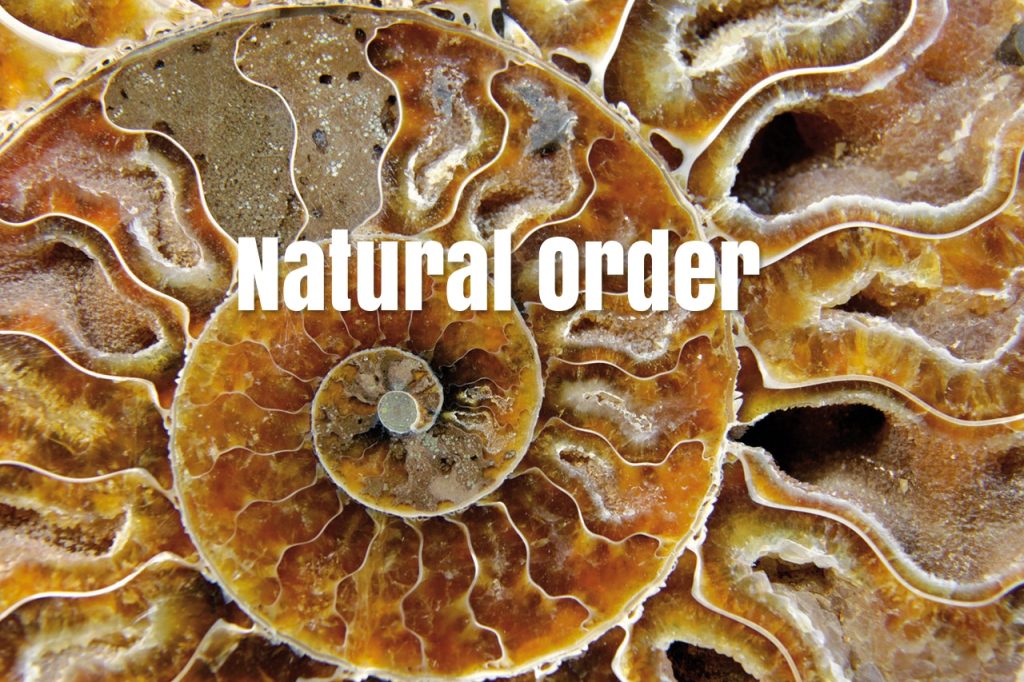People have long sought the natural order in everything from life and our world to our very universe. Philosophers and scientists alike have pursued this order for thousands of years, which in recent centuries especially is being revealed ever so slowly via science itself. Some forty years ago, however, scientists stumbled upon an extremely interdisciplinary discovery that is gradually exposing the inherent order behind every last phenomenon.[1] Just as Darwin revealed the hierarchical self-organization of life on earth via survival of the fittest species and adaptations, scientists are now revealing the hierarchical self-organization of our entire cosmos via ‘survival of the fittest systems’ in general.[2]
From subatomic particles to entire galaxies, many are now finding that survival of the fittest and elimination of the weak operate well beyond the bounds of biology.[3] Subatomic particles can be smashed in accelerators such as the LHC, or Large Hadron Collider.[4] Atoms are smashed via nuclear fusion, releasing an enormous amount of energy in the process. Molecules too can interact and even destroy another, as can planets, moons, stars, and even entire galaxies.[5] In some 3.75 billion years, our Milky Way will collide with the Andromeda Galaxy,[6] and it is still unclear if life and earth will survive this cataclysmic event. Scientists are therefore finding that survival of the fittest systems and elimination of the weakest systems ultimately operate among everything from quantum physics and physics to geology and even astronomy at large.
How Does Natural Order Arise?
Scientists are learning that these processes are together cumulative, leading to the preservation, elimination, and thus the furthered refinement of all natural phenomena to ultimately endure. In other words, not only are those that endure relatively stable to begin, but it has been found that they can undergo evolutionary improvement as well. Due to the unending and therefore cumulative processes of preservation and elimination, greater refinement and therefore greater stability can become increasingly necessary over time. As is the case in life, an ordered evolution, or progression, is typically made for all stable phenomena, wherein they find equilibrium and sometimes greater equilibrium.
Naturalist D. B. Kelley has quantified, or measured, this phenomenon by showing that entropy reduction may be the most fundamental fitness criterion for all such stability and order. By measuring entropy reduction, or the reduction of chaos that results from certain interactions, we attain a universal measure for gauging relative stability. By seeing how much chaos has decreased for a phenomenon due to its own adaptive self-organization, we can see how much more stable it has become. However ironically then, the best way to measure order is by first measuring disorder to see how much it has been reduced for the ensemble at hand. In accord with the ancient proverb Ordo ab chao, we thus have “Order from chaos.”
In short, stability is always merely relative. Depending on the environmental conditions at hand, things are either stable or they aren’t. Again, this can follow from everything from particles to galaxies colliding and even destroying one another, as the most stable phenomenon will typically predominate—just as it is in life itself.
Kelley has quantified the means by which regulatory feedback too occurs in both life and Nature. In fact, scientists are finding in recent decades especially that, like living things, everything from particles to galaxies is governed by adaptive, regulatory control. To address star formation, in Kelley’s words,
“An interstellar cloud produces stars when it is cold and matter is able to accrete. Once stars form from gas and debris, however, the cloud is then heated and their production becomes hindered. But when these same massive stars die as supernova, the surrounding cloud cools and their formation is once again able to resume. Consequently, this process too gives rise to a thermostat by which star formation is governed in full.”[7]
Kelley thus goes on to show how both entropy reduction and regulatory feedback have governed all of Nature’s most fundamental systems in general, making them more stable and therefore ordered.
It should thus be increasingly clear that where there’s stability, there’s order. The regulatory stability that is preserved via survival of the fittest systems simultaneously reveals the natural order of the system at hand. This order is preserved, built upon, and even refined via survival of the fittest and elimination of the weak, which are themselves cumulative Darwinian processes. Although the self-organization of every system results in a different composition of both parts and arrangement, this arrangement is relatively consistent among similar types. Particles, for example, all have similar compositions, as do atoms, molecules, and so on. Each of these varied types also has tremendous stability and order alike.
This is the field of Universal Darwinism, or the theory of universal selection. It hypothesizes that Darwin’s theory of natural selection, or the principle of survival of the fittest, is ultimately at work among all of Nature’s systems. It proposes that, just as selection reveals the hierarchical self-organization of genes and species in life, it also reveals the hierarchical self-organization of all such natural phenomena in their entirety. In other words yet, not only does it explain the ordered arrangement of every feature of every species, but it explains the ordered characteristics of every system that has ever been or will be.
References
1. Dawkins, Richard (1976), The Selfish Gene, Oxford University Press.
2. Kelley, D. B. (2020) The Origin of Phenomena, Woodhollow Press.
3. Zurek, W. H. (2003). “Decoherence, einselection, and the quantum origins of the classical”. Reviews of Modern Physics. 75 (3): 715–775. arXiv:quant-ph/0105127
4. Alexander Belyaev (2009). “Supersymmetry status and phenomenology at the Large Hadron Collider”. Pramana. 72 (1): 143–160. Bibcode:2009Prama..72..143B. doi:10.1007/s12043-009-0012-0
5. Kelley, D. B. (2020) The Origin of Phenomena, Woodhollow Press.
6. “NASA’s Hubble Shows Milky Way is Destined for Head-On Collision”. NASA. 31 May 2012. Archived from the original on 4 June 2014. Retrieved 12 July 2012.
7. Smolin, Lee, (1997), The Life of the Cosmos, Oxford University Press, pp. 130-131.
